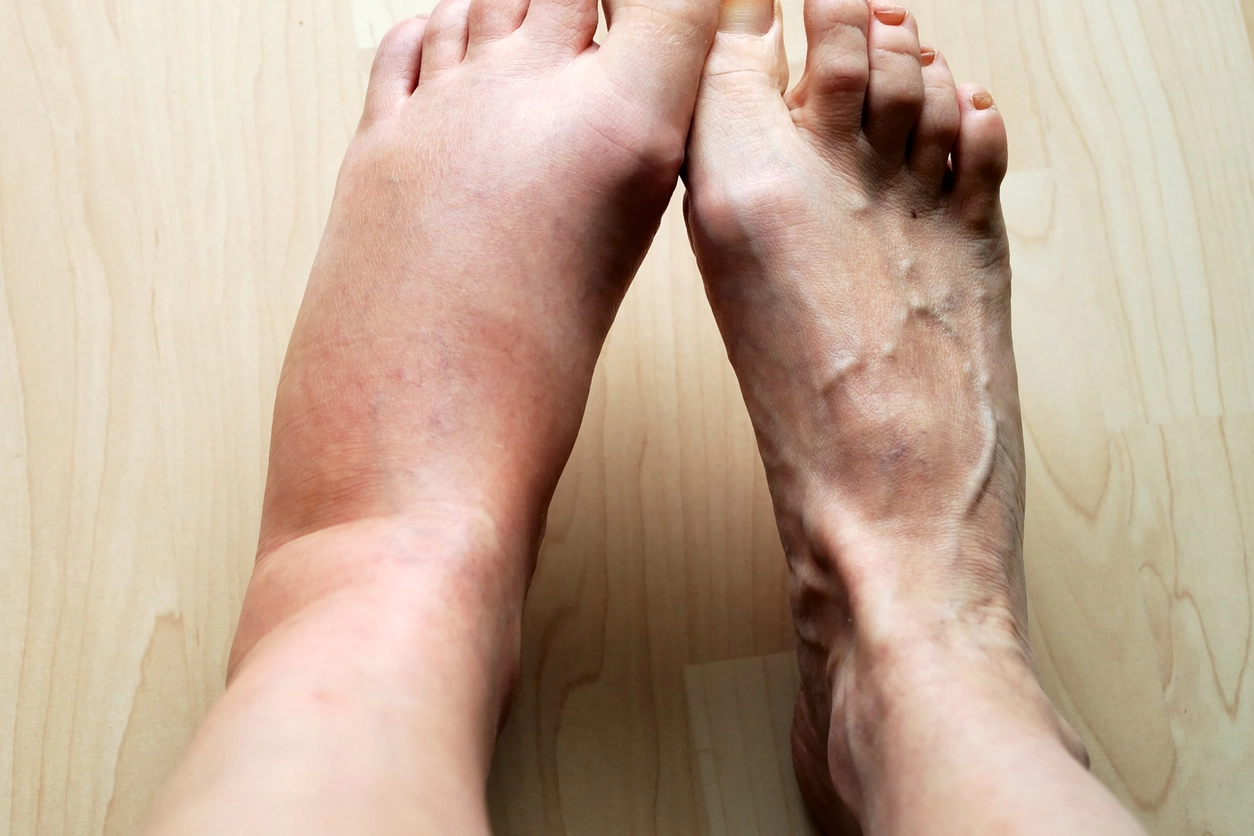Ankle Swelling
Side Bar
Ankle Swelling

causes of swollen ankles
1.Injury
- Injury in form of trauma or ankle twist cause ankle swelling.
Immediate Treatment
- resting
- immediately applying ice wrapped in a thin piece of cloth
- applying a compression wrap, bandage, or dressing
- elevating the foot above heart level
- NSAIDs to reduce the pain and reduce swelling
- wearing a walking boot or brace to provide ankle support
2. Cellulitis
Bacterial infections in the skin are called cellulitis. People with diabetes are particularly prone to this type of infection.
Cellulitis can cause various symptoms, including redness, warm skin, and swelling that spreads rapidly. In rare cases, cellulitis can be life threatening without treatment.
People with cellulitis need to take antibiotics. It is essential to tell a doctor if the swelling does not reduce or gets worse after a few days of treatment.
3. Chronic venous insufficiency
Chronic venous insuffiency is a common cause of edema. It is a condition that affects the valves in the leg veins but may occur in other locations.
It can be painful and uncomfortable. It may also cause noticeable changes to the skin.
Treatment
- wearing compression stockings to reduce swelling and help heal skin ulcers
- avoiding prolonged sitting or standing
- keeping the legs raised to improve blood flow
- walking or doing exercises that build the calf muscles
4. Blood clots
Sometimes, a blood clot, or thrombosis, can develop in one of the veins in the arm or leg. This is Deep vein thrombosis and requires urgent medical attention.
DVT obstructs the flow of blood returning to the heart, causing it to build up in the affected limb.
People who experience a DVT should consider:
- elevating the affected limb
- wearing compression stockings to promote blood flow
- taking anticoagulant medications, or blood thinners
- undergoing a stent procedure, during which a surgeon inserts a tube into the vein to keep it open
5. Heart failure
Heart Failure occurs when the heart can no longer pump blood as effectively as it should.
In heart failure, a reduction in blood flow out of the heart causes blood to back up into the veins. This may lead to fluid buildup in tissues, including the legs and ankles.
6. Chronic kidney disease
Chronic kidney disease is permanent kidney damage, which can worsen over time.
A person may not experience symptoms until they are in the late stages of the disease, called kidney failure.
During Kidney failure, the kidneys struggle to remove waste and extra fluid from the body. This can lead to a range of symptoms, including swollen ankles.
7. Liver disease
A healthy liver produces a protein called albumin. Albumin prevents fluid from leaking out of the blood vessels and surrounding tissues.
Very low albumin levels due to liver disease can cause a buildup of fluid in the legs, ankles, and abdomen.
MANAGEMENT
Treatment of ankle swelling depends upon the cause if the swelling.
So Diagnosis is more important for ankle swelling then mere treatment.
